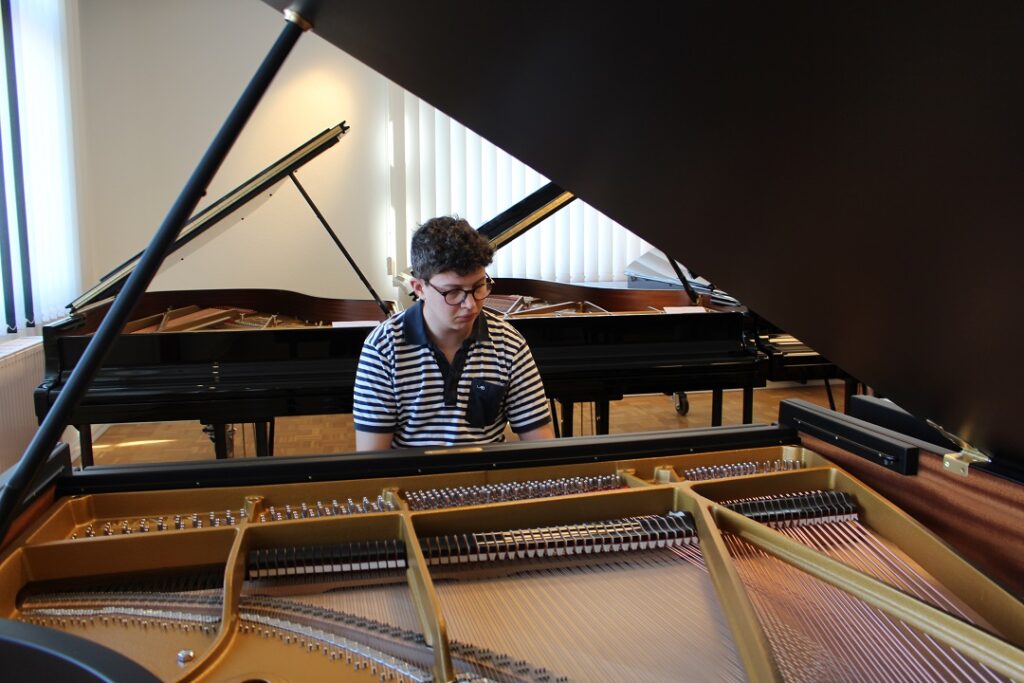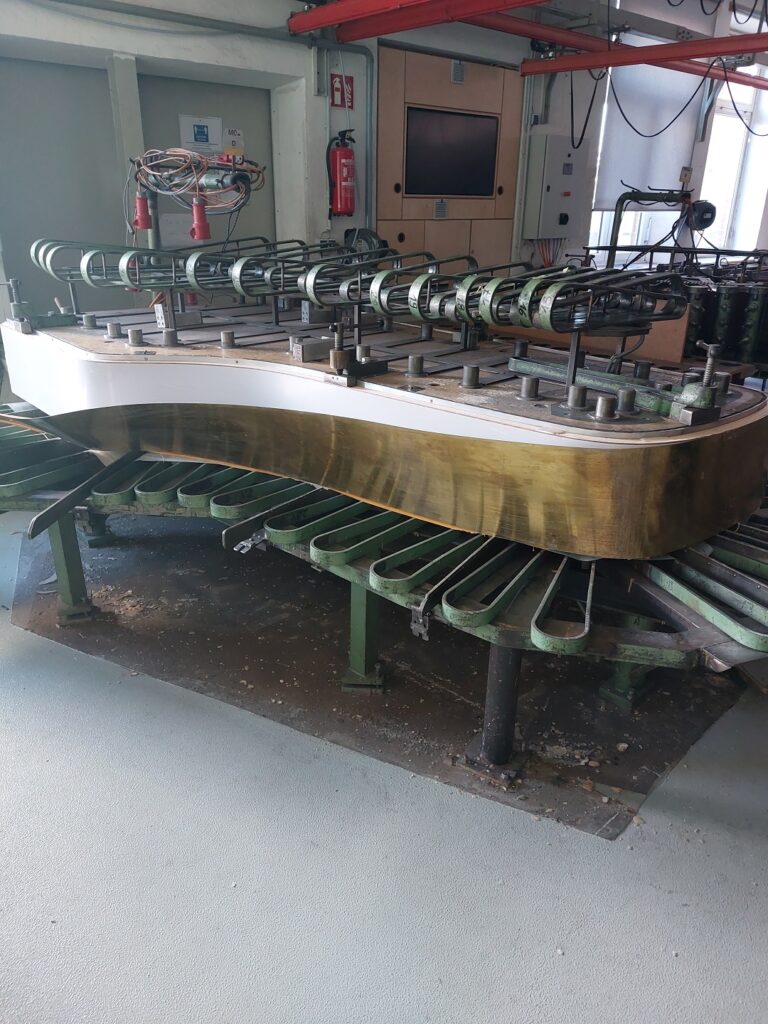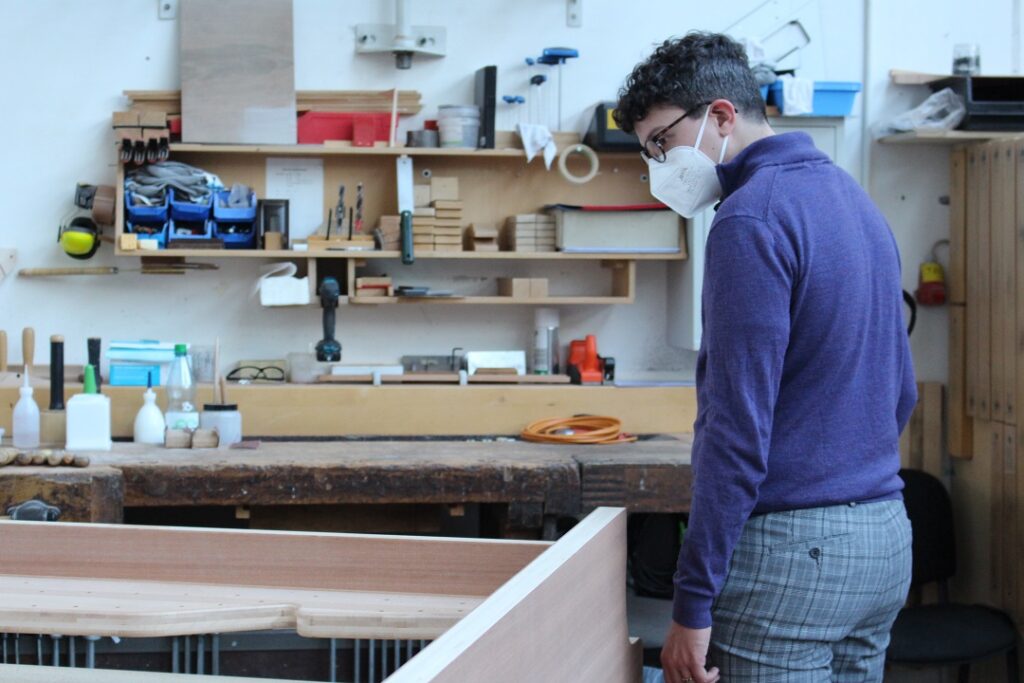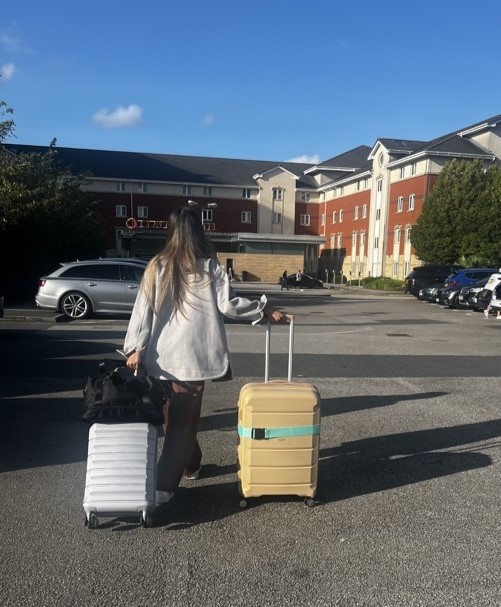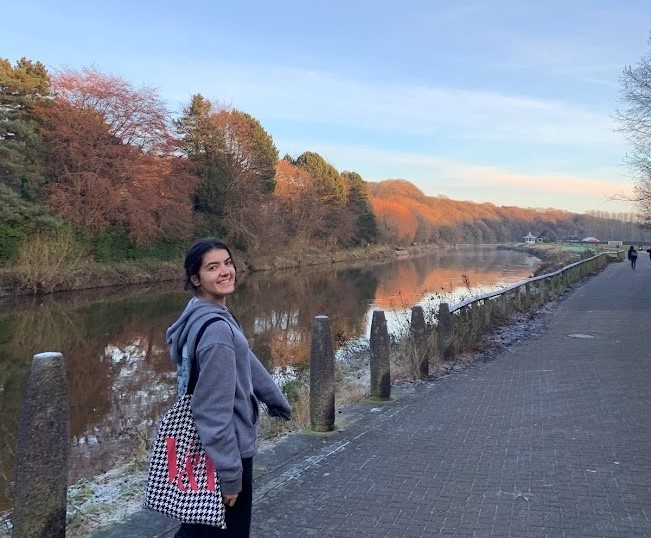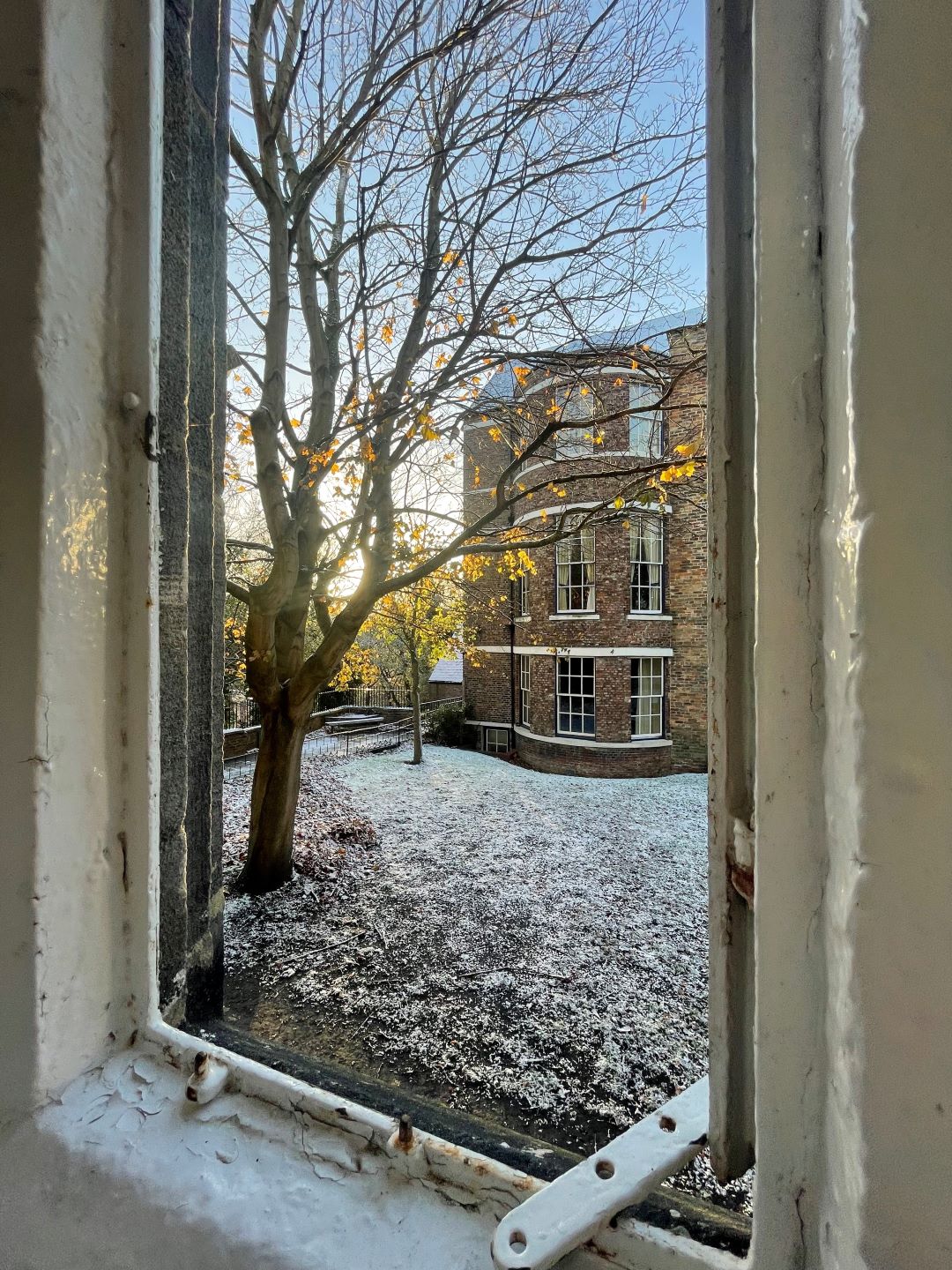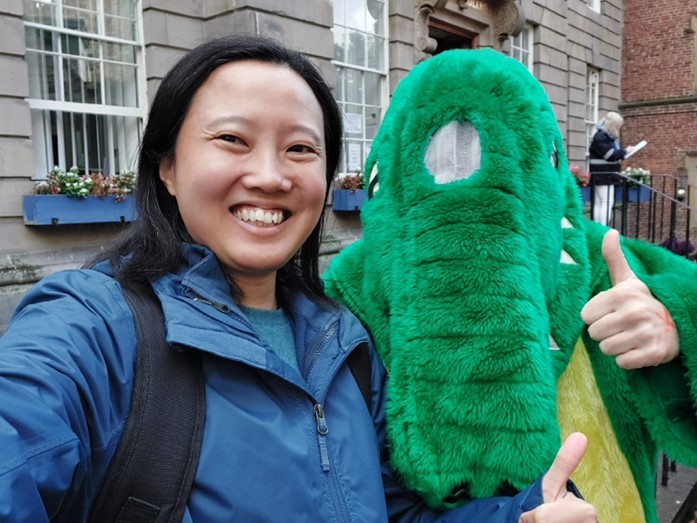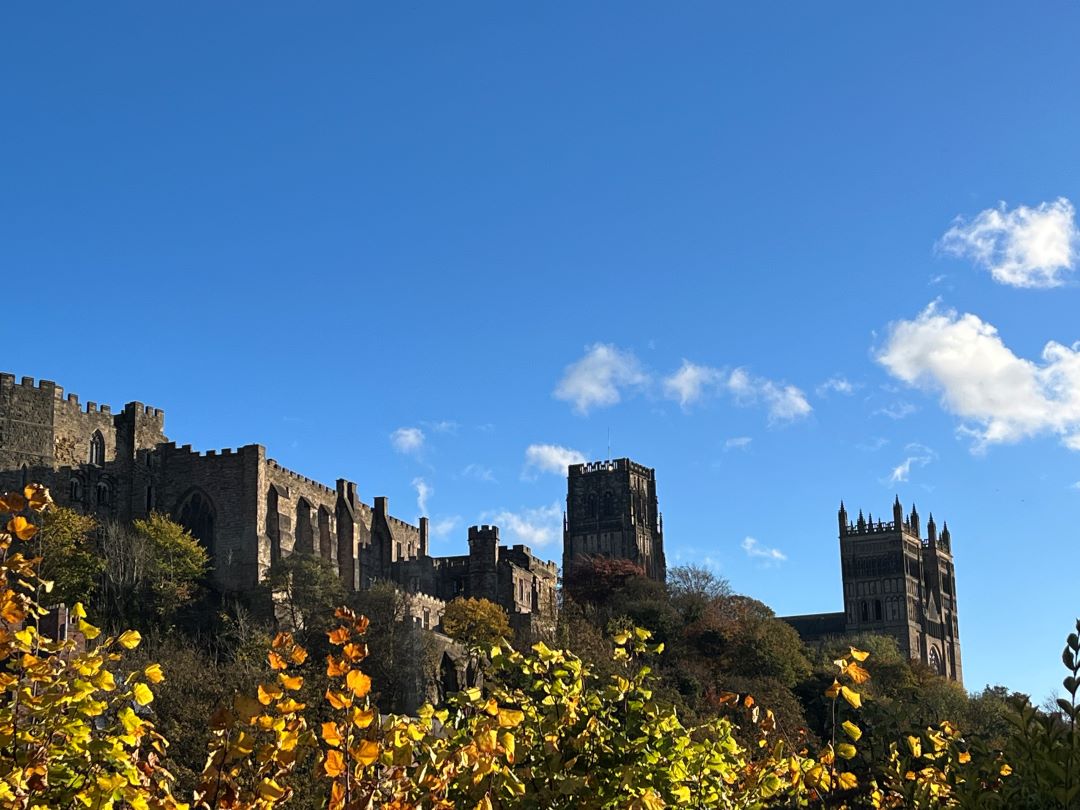An amazing opportunity
I had the absolute honour of travelling to Hamburg a few weeks ago to visit the Steinway and Sons factory to choose the Steinway piano for the Saltwell Building at Durham University.
After a quick change in Amsterdam, we arrived at the factory to go on a tour showing how the pianos are made. The story starts with wood that seasons for three years before being cut down to size for a piano. Each instrument uses wood from only one tree to achieve consistency across the instrument. We were taught how to choose good-quality wood for a piano, looking at the growth rings and the variation in growth over a decade.
We were shown all of the processes that go into turning sheets of wood into a case, but for me, the most fascinating part was the soundboard room. Here is where the piano’s voice is created by hand using wood that has been under dried and putting overdried wood batons over the top to create a very slight curve. This tension allows a piano to sing and gives it its unique voice.
There were pianos ready to be exported worldwide at the factory. Amongst the many instruments we saw was the Steinway concert grand used for the Royal Albert Hall in London. This instrument is rented out because the Royal Albert Hall does not have a piano store, as it was seen as unfashionable to have one at the time of its construction.
Having had a busy day learning all about the pianos, we were invited to dinner by Steinway. The restaurant was only a few feet from the waterfront of the Hamburg docks, and it was so beautiful watching the lights dance on the water whilst we ate.
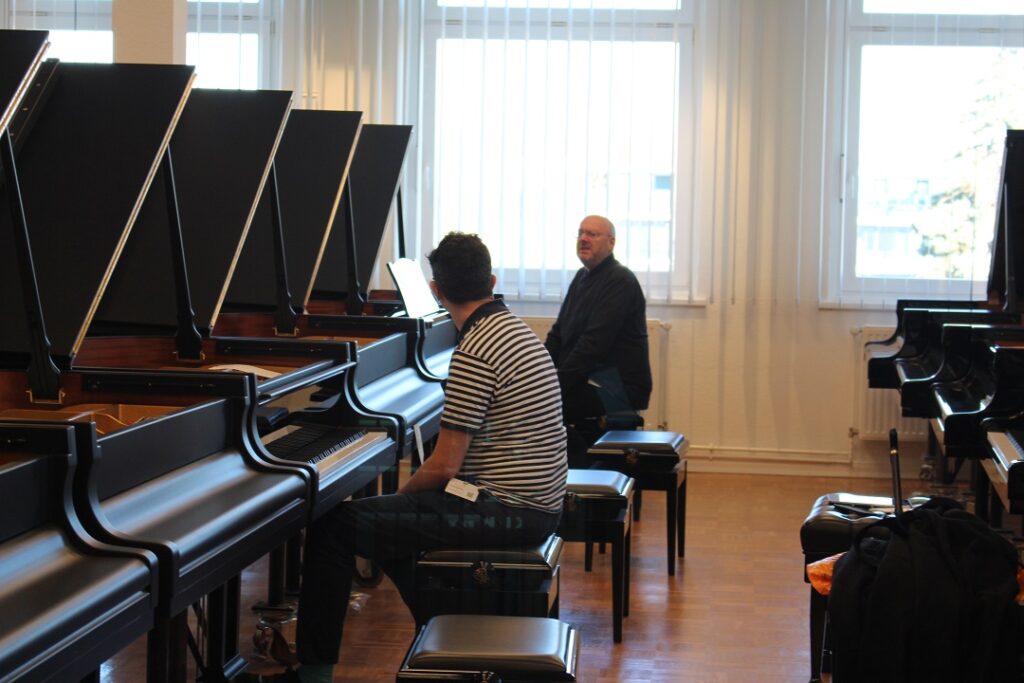
Choosing the right pianos
On the second day, we returned to the factory to commence selections for Durham University. We began with choosing the AS Models for the Music Department with John Snijders; we had ten instruments to choose from, and they all sounded so different! I was amazed that there was so much tone variation in all of these instruments. When it came to my turn to choose the instrument for Saltwell, I spent a lot of time considering the space the piano would live in and its purpose; the piano needed to be accessible to all. It would be easy to access the full range of tone but not be unrewarding for the more advanced players. I also thought about its use as a rehearsal instrument for choirs and how important it was that each note in a chord could be clearly distinguished, allowing singers to tune to the right note. I tried several pianos before settling on the tenth AS Model. I chose this piano because of its beautiful bass tone and solid high register, making it perfect for recitals and rehearsals alike.
I thoroughly enjoyed my experience in Hamburg. It proved very fruitful for me as a musician; I wrote three compositions in the space of 48 hours which is very rare for me. The creative freedom and exposure to so many sublime instruments allowed my creative side to flourish. It was indeed an experience I will never forget.
Discover more
About studying music at Durham here
The Steinway project and Durham here
Download our latest prospectus and college guide here.
Follow our students on Instagram YouTube and TikTok
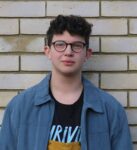
Benjamin Southwick
Benjamin Southwick (he/they) is a second-year at Stephenson College reading Music. He is the Director of Music for St Cuthbert’s Society Choir and the Chair of the EDI Committee for Music Durham. Outside University he has just completed research on Clara Wieck-Schumann. You can find out more about Benjamin here on the Laidlaw Network, LinkedIn and Instagram.

